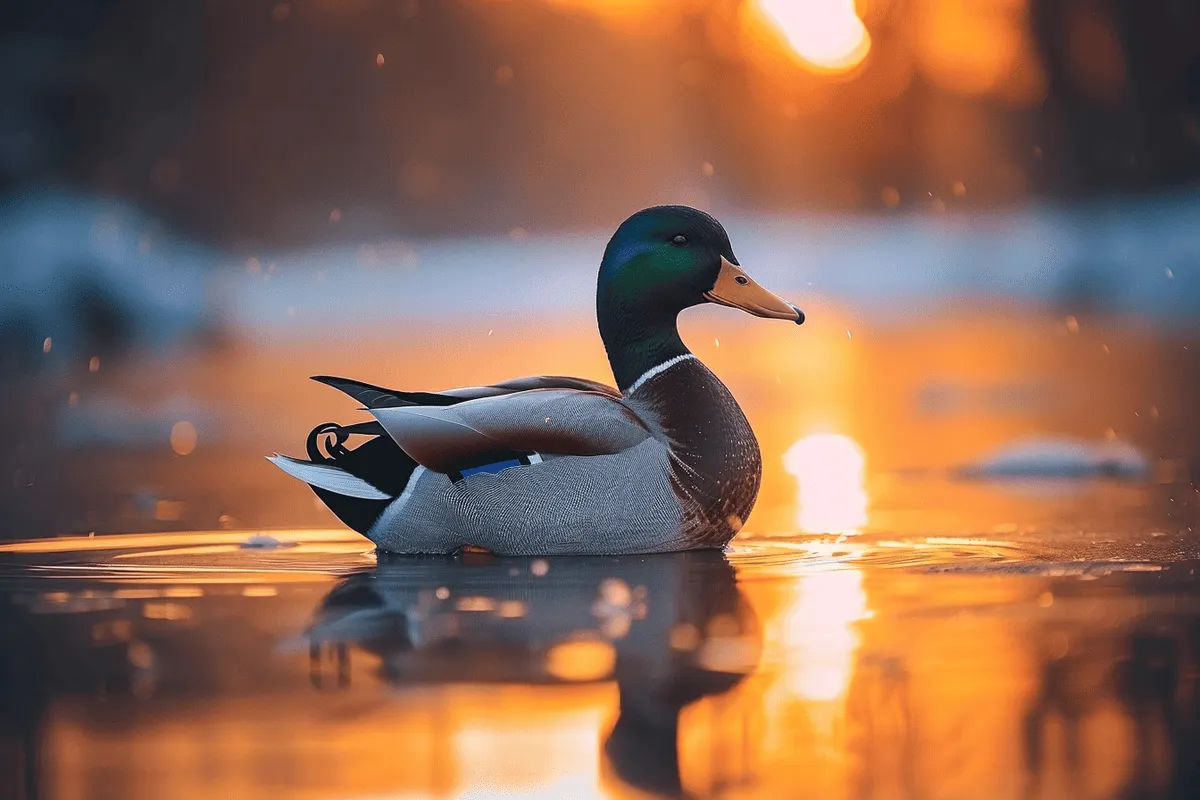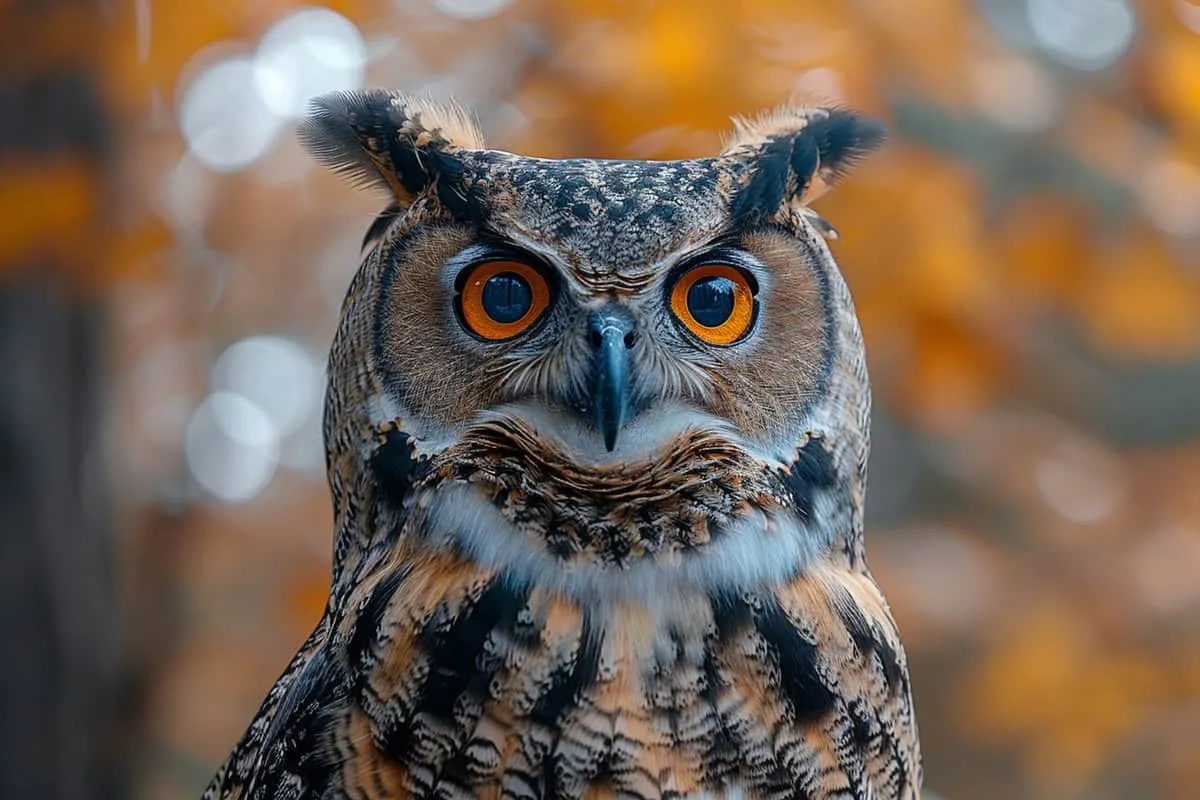10 Duck Facts (Surprising Insights Into Their World)
Ducks are more than just birds you see at the pond. They have some of the most fascinating behaviors and traits in the animal kingdom.
From their incredible ability to migrate thousands of miles to their quirky habit of sleeping with one eye open, ducks are full of surprises.
Their world is a blend of mystery and wonder, from diving deep underwater for food to forming lifelong bonds with their mates.
If you thought you knew everything about these feathered friends, think again. Dive into our listicle to uncover duck facts that will leave you quacking for more.
1. Ducks Have Waterproof Feathers
Ducks are fascinating waterfowl known for their ability to stay dry even when they dive deep underwater. The secret behind this superpower? Waterproof feathers.
These birds have a special oil that they get from a preen gland near the base of their tail. When ducks preen, they spread this oil all over their feathers.
The structure of duck feathers also plays a crucial role in keeping them dry. Feathers overlap like shingles on a roof, creating an impenetrable barrier against water.
This overlapping pattern ensures that water slides right off instead of soaking into the bird’s skin.
Preening is not just about spreading oil; it’s essential for duck health and waterproofing maintenance.
By using their beaks to brush through their feathers, ducks distribute the oil evenly across every feather. This process keeps the feathers flexible and maintains the waterproof effect.
Aquatic birds like ducks spend much time searching for food in habitats ranging from freshwaters where fish eggs abound to salty seas where scaup dive for shellfish. Their ability to remain buoyant and dry while doing so is vital for conserving energy and staying warm.
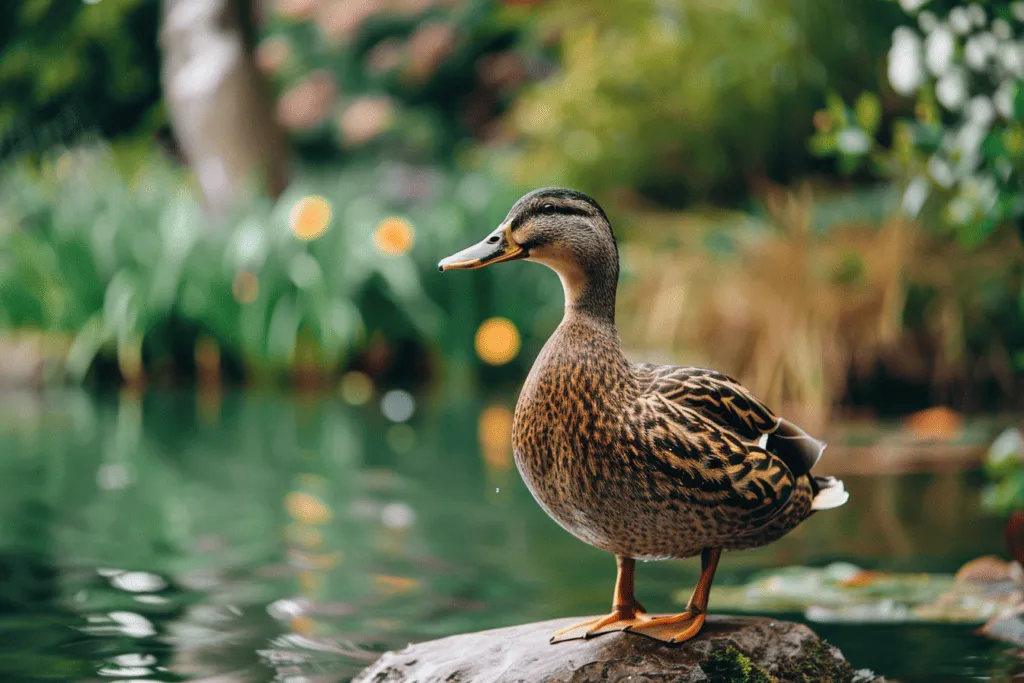
2. Ducks’ Feet Have No Nerves or Blood Vessels
Ducks have a superpower. Unlike us, they can swim in cold water or stand on ice without feeling chilly. This is because their feet are built differently from ours.
The secret lies in the fact that ducks’ feet don’t have any nerves or blood vessels.
Imagine wearing boots that keep you warm without needing socks; that’s how ducks’ feet function naturally.
This unique adaptation helps them prevent heat loss. Since there’s no blood flow to freeze, their feet can handle icy waters effortlessly.
It’s like having built-in snow shoes for the winter season.
Moreover, this feature allows ducks to stand on frozen surfaces without freezing themselves. They can waddle around on ice as if they’re taking a stroll in the park during springtime.
Here’s how it benefits them:
- Prevents Heat Loss: With no blood vessels in their feet, ducks conserve body heat more efficiently.
- Tolerance to Cold Water: Enables them to hunt and paddle even in freezing temperatures.
- Ice-Walking Capability: Standing on ice isn’t an issue since their feet won’t freeze.
3. Ducklings are Born Ready to Walk
Right after they hatch, ducklings don’t waste any time. They leave their nest within just a few hours. Imagine being born with the ability to walk and follow your mom around immediately! That’s what these little guys do.
The mother plays a big role in their early life. She leads them to food and keeps them safe from harm.
It’s fascinating how quickly they learn to stick close by her side for everything they need.
Ducklings have webbed feet, which not only make them great swimmers but also help them walk on various surfaces right from the start.
Their independence is quite impressive; while human babies take about a year to start walking, ducklings are up and moving almost instantly!
It’s important for us humans to remember that feeding ducks bread is actually harmful. Instead of bread, we should offer healthier options like plants or seeds if we want to feed them.
4. They Can Sleep With One Eye Open
Ducks have a fascinating way of resting. While one half of their brain catches some z’s, the other half stays wide awake.
This unique ability allows them to keep an eye out for any potential danger, ensuring they’re always ready to spring into action if needed.
Imagine being able to doze off at your desk but still be alert enough to respond if your boss walks by. That’s pretty much what ducks do, except their main concern is staying safe from predators rather than impressing their boss.
This skill isn’t just a quirky party trick; it’s crucial for their survival.
The part of the brain that remains awake keeps watch over the environment. If it senses anything off—like the approach of a hungry fox—the duck can quickly wake up and make its escape.
It turns out ducks aren’t alone in this talent. Many bird species share this ability as a common defense mechanism against threats.
It’s like having a built-in security system while they rest.
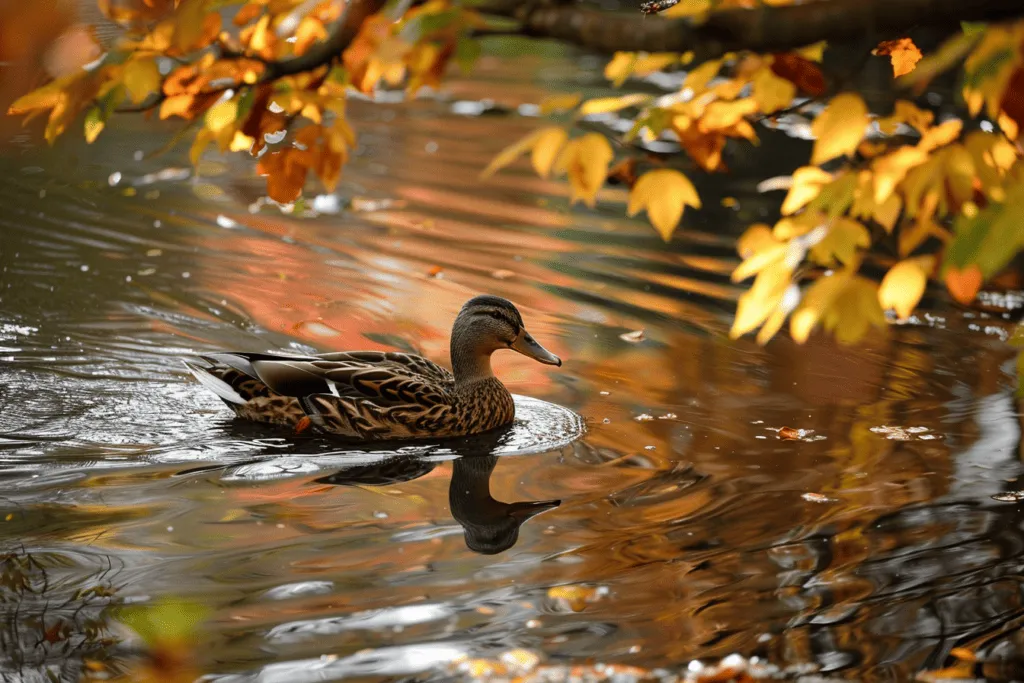
5. Ducks Have Different Quacks
Ducks are fascinating animals, and their quack sounds are no exception. These sounds vary greatly among the distinct species of ducks, and even between genders within the same species.
What’s more interesting is that these variations serve a purpose.
Females tend to be louder than males. This difference in volume helps them communicate more effectively, especially when trying to gather or protect their ducklings.
In large groups, having a louder quack can make it easier for ducks to locate each other.
The reason behind these varying quacks comes down to communication needs. Ducks use different sounds depending on the situation they’re in:
- To signal danger
- To call their ducklings
- To attract a mate during mating season
Each sound or “quack” has its unique tone and pitch that conveys a specific message to other ducks nearby.
It’s like having their own language which changes with time and season, showcasing an abstract intelligence not often credited to animals.
Here’s something else that’s quite intriguing – researchers have found that urban ducks have developed louder quacks than their rural counterparts, possibly adapting over time to ensure they’re heard over city noises.
6. They Can Fly Up to 330 Feet High
Ducks are not just about waddling and quacking. When it’s time to move, they take to the skies in an impressive way.
During migration periods, ducks achieve great heights, sometimes up to 330 feet above the ground.
This isn’t just a random flight pattern; there’s a method to their high-flying madness.
One of the reasons ducks soar so high is to use thermal currents in the air. These invisible “rivers” of warmer air help them glide without flapping their wings too much.
It’s like catching a free ride on nature’s elevator!
By conserving energy this way, ducks can travel long distances without getting too tired.
Flying at such altitudes also keeps them safe from many predators who either can’t reach that height or find it hard to spot these birds against the vast backdrop of the sky.
Plus, being up high gives ducks a good vantage point to scope out safe landing spots or water sources below.
7. A Group of Ducks Can Be Called a “Raft”
When ducks gather together in water, they form what is known as a “raft”. This term paints a vivid picture of how closely these birds stick together, almost like they’re forming their own little boat. But that’s not the only name for a group of ducks.
In addition to being called a raft when in water, these groups can also be referred to as a team or paddling. It seems fitting since watching them move across the water does remind one of a well-coordinated crew rowing in unison.
However, once these feathered friends land on solid ground, their group name changes. On land, you’d refer to them as either a flock or brace.
It’s interesting how their activities influence what we call them!
The names for duck groups also vary depending on where you are in the world and who you’re talking to. Some might use terms specific to their region or community.
Yet regardless of what we call them, it’s clear that ducks have quite an organized family life whether they’re diving for small fish and aquatic plants or flying through the sky.
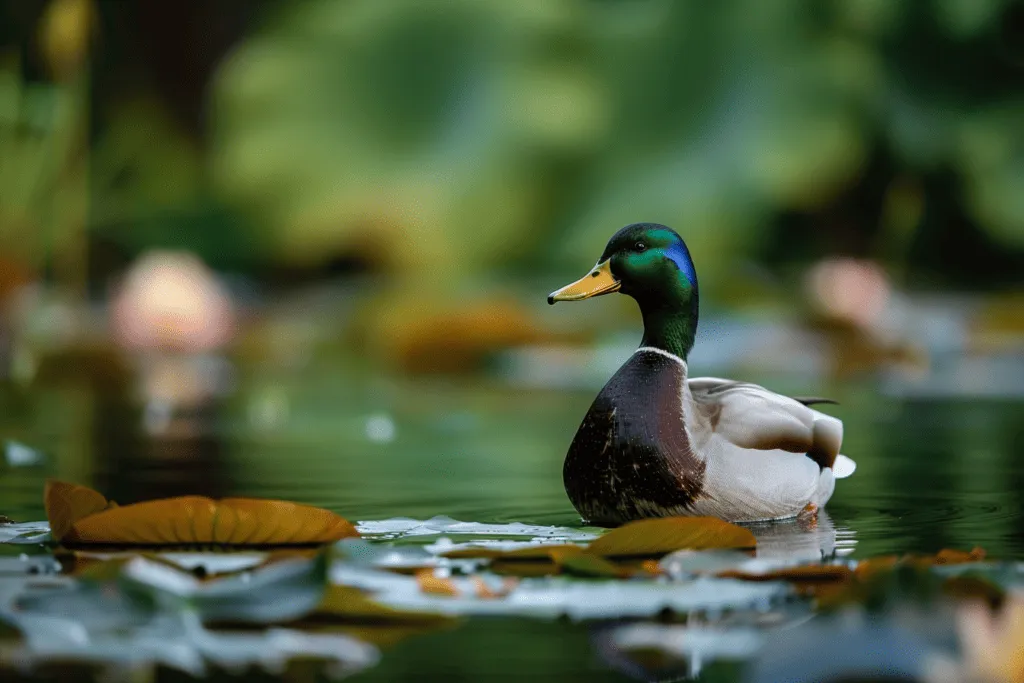
8. Ducks Have Been Domesticated for Over 500 Years
Ducks were first brought into our homes and farms over 500 years ago. Humans saw the value in ducks for their eggs, meat, and feathers. This was just the beginning of a long friendship between ducks and humans.
Over time, we’ve created many different breeds of ducks. Each breed has its own special job or purpose. Some are great at laying eggs, while others might be better for meat or even show.
These birds play a big role in agriculture around the world.
They help us by eating pests that could harm crops and by providing fertilizer with their droppings.
In many cultures, ducks hold a special place in tradition and everyday life. From being featured in stories and art to being part of holiday meals, they’re more than just farm animals; they’re part of human history.
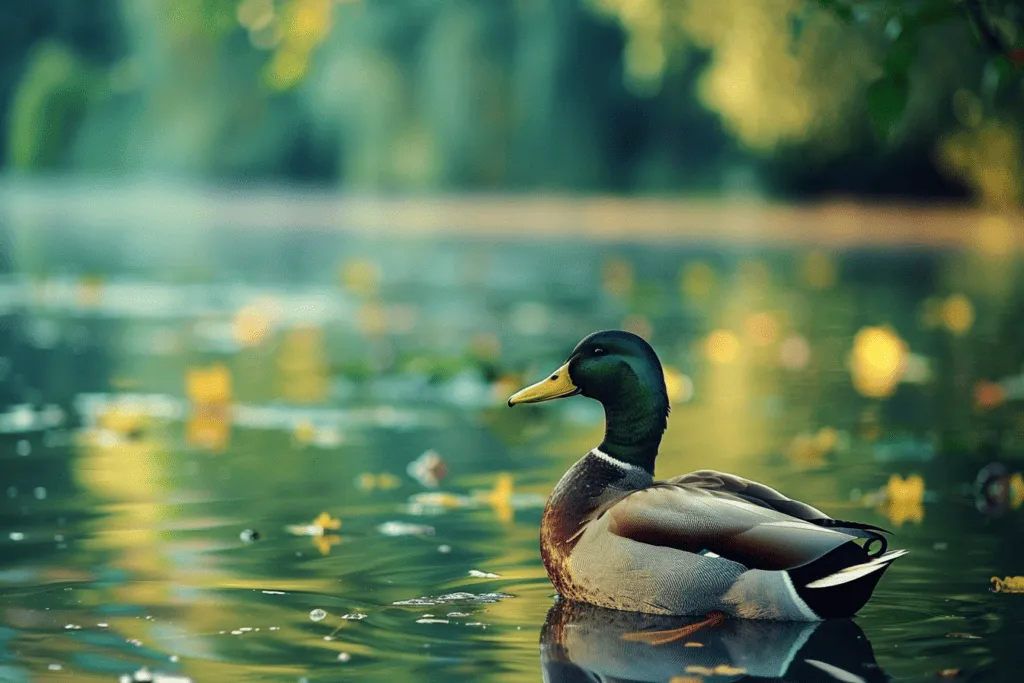
9. Male Ducks are Called Drakes
In the world of ducks, males have a special name: drakes. Females, on the other hand, are either called hens or simply ducks. When they’re young and fluffy, both male and female ducks share the cute title of ducklings.
One fascinating aspect about drakes is their distinctive plumage.
During mating season, male ducks spruce up to look their best for potential mates. This means they often sport brighter colors and more elaborate feathers than females.
It’s nature’s way of making sure they stand out in the crowd—or in this case, the flock.
Why do drakes go through all this trouble?
Well, it’s all about attracting a mate.
Bright colors and fancy feathers act like a billboard saying “choose me!” to female ducks looking for a strong partner.
This isn’t just about looks; these traits can signal to females that a drake is healthy and has good genes to pass on.
But life as a drake isn’t all about showing off feathers. They face challenges too—like protecting themselves from predators such as wild dogs or fish that might see them as an easy meal during mating season when they’re distracted by courtship duties.
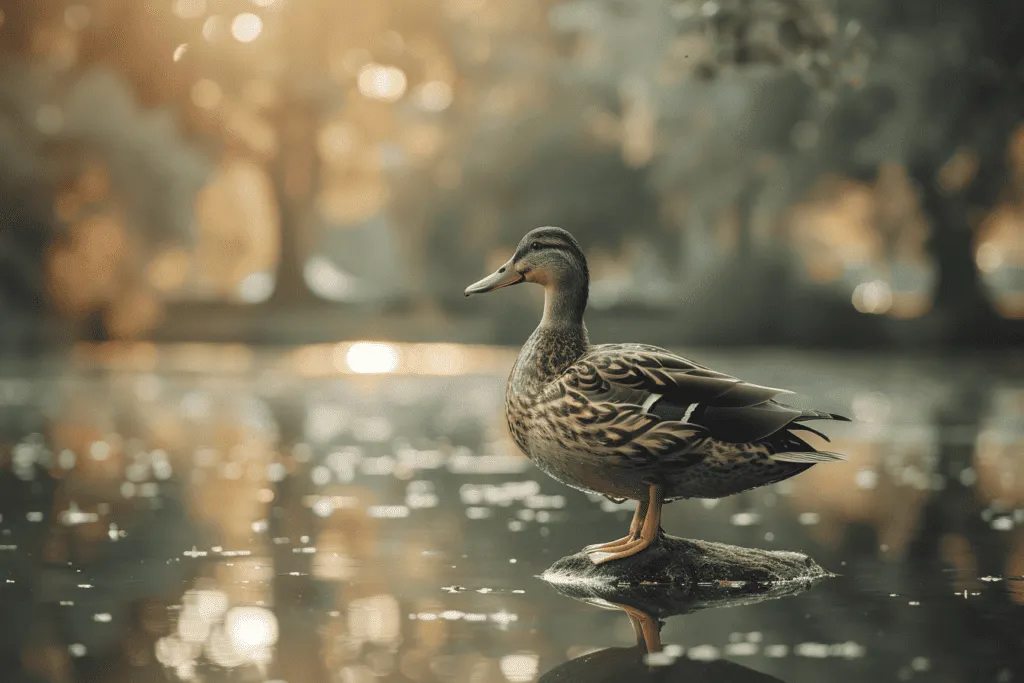
10. Ducks Can Live From 2 to 12 Years in the Wild
Ducks have a wide range of lifespans, which can greatly vary depending on their species and the environment they live in.
While some ducks may only live for a couple of years, others can enjoy life up to 12 years if conditions are right.
The biggest threats that cut their lives short include predation by larger animals and loss of natural habitats.
Foxes, hawks, and even humans pose significant risks to these birds. As forests and wetlands are cleared for development, ducks lose not only their homes but also their sources of food and protection from predators.
Interestingly, when ducks are taken into captivity, such as in zoos or sanctuaries where they’re protected from predators and receive regular meals along with medical care, they tend to live longer. Here’s why:
- Predator Protection: In captivity, there aren’t any foxes or hawks to worry about.
- Consistent Food Supply: They get fed regularly without having to search far.
- Healthcare: Any sign of illness is quickly treated by veterinarians.
This difference highlights how human activity impacts duck populations not just negatively through habitat destruction but positively through conservation efforts.
Frequently Asked Questions
How long can ducks live in the wild?
Ducks can have a lifespan ranging from 2 to 12 years when they’re out in the wild. It’s quite a range, depending on their environment and predators.
What do you call a male duck?
Male ducks are known as drakes. Just like princes among ducks, if you will.
Can ducks really sleep with one eye open?
Yes, they can! Ducks catch Zs while keeping one eye peeled for danger. It’s like having your cake and eating it too—resting while staying alert.
Do all ducks quack the same?
Nope, each duck has its own unique quack. Think of it as their personal calling card or voice signature.
Are ducklings born ready to hit the ground running?
Absolutely! Ducklings come into this world ready to walk and follow mom around. They waste no time getting their feet wet—literally!
Why don’t ducks get cold feet in water?
Duck feet are free of nerves or blood vessels, making them immune to chilly waters. It’s as if they’re wearing built-in wetsuits for their feet!
How high can ducks fly?
Ducks are capable flyers. They can reach heights up to 330 feet. That’s about as tall as a 30-story building!

